
Minor 3rd Interval Songs
Here are some famous examples of minor 3rd intervals in popular songs. There really are too many to choose from as any two notes that are a three half-steps (semitones) apart are classified as a Minor 3rd interval.
Brahms’ Lullaby
The cradle song was dedicated to Brahms’s friend, Bertha Faber, on the birth of her second son. It was first performed in 1869 in Vienna and is one of the most famous and recognisable lullabies today. The first two notes (A – C) are an ascending Minor 3rd and this motif is repeated throughout the piece.

‘Seven Nation Army’ – The White Stripes
Part of the ‘garage rock’ revival in the in the early 2000s, The White Stripes had create success with ‘Seven Nation Army’. The main riff, as you can see from the image below, contains a Minor 3rd from the G natural to the E natural.

Jingle Bells
Even Christmas songs contain minor 3rd intervals. Jingle Bells gives up an E natural to G natural in the third bar. This is because G# is the 3rd degree of E major, therefore E – G will be a Minor 3rd.

greensleeves
This traditional English folk song dates back to the 16th century. The E natural to G natural at the very beginning gives us a Minor 3rd interval.

What is a Minor 3rd Interval?
Firstly, the definition of an interval is the distance between two notes. We could play the notes at the same time, a harmonic interval, or one of the other, a melodic interval. So how can we describe the distance between two notes.

Using whole steps and half-steps (tones and semitones)
We could describe an interval in terms of the number of half-steps for the lower note to the upper note. For a minor 3rd we have to go up three half-steps (or one and a half whole-steps) to create the interval.
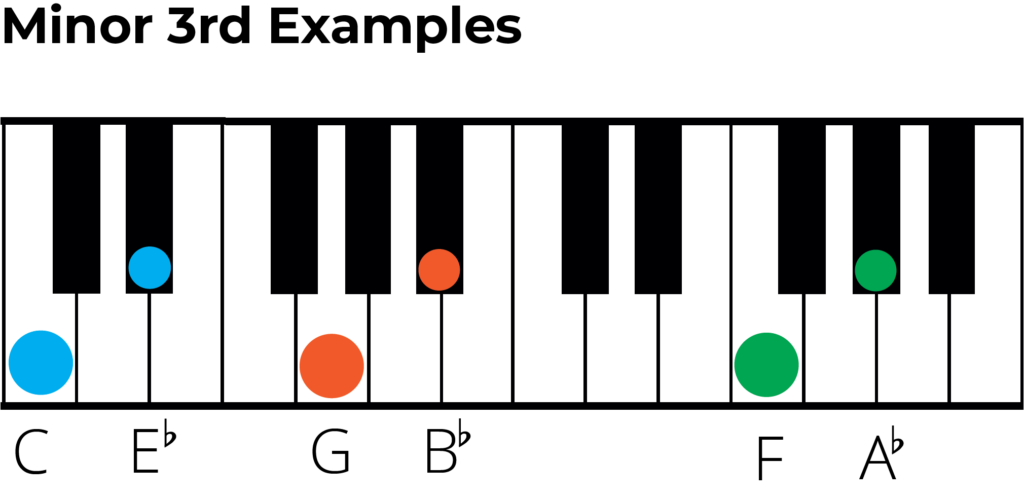
Using scales to name intervals
Simply put, scales are patterns of half-steps and whole-steps. In the major scale, the 3rd degree will give you a Major 3rd. In a Minor scale, the 3rd is flattens and so you will create a Minor 3rd interval.

Ear Training and Intervals
To develop as a musician you’ll want to be able to recognise intervals by ear. This is where ear training comes in, as the more you practice, the better your’ll get.
My recommendation for this is Tonegym as they have a comprehensive and fun program for training your ears. It’s what has gotten the best results with for my own students.
In the ‘tools’ section of their site, Tonegym even have an interval memorizer that allows you to learn every type of interval.
For an in-depth look at ear training, here’s my full review of Tonegym.
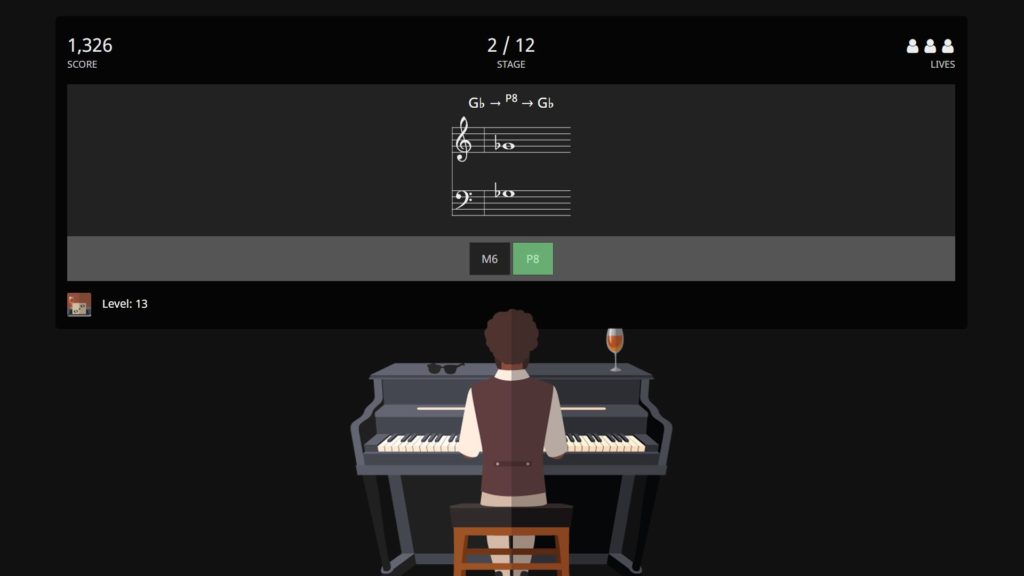
Examples of Minor 3rd Intervals
Here is a table which shows Minor 3rds across a whole octave. Remember that to name an interval ask yourself, ‘Which degree of the lower note’s scale is the higher note?’
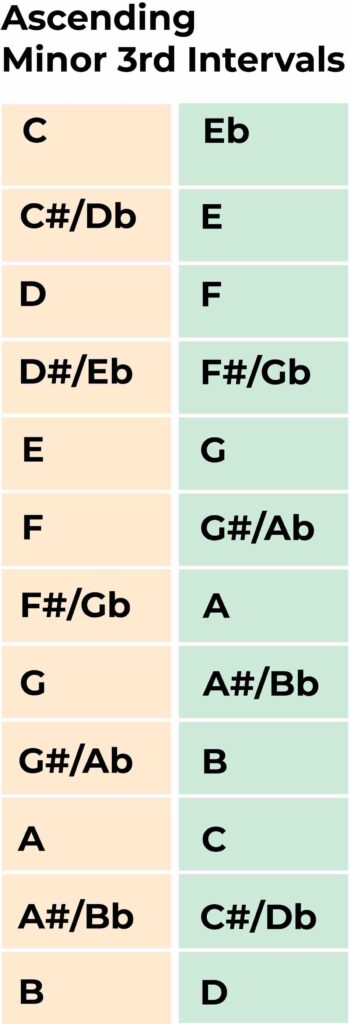
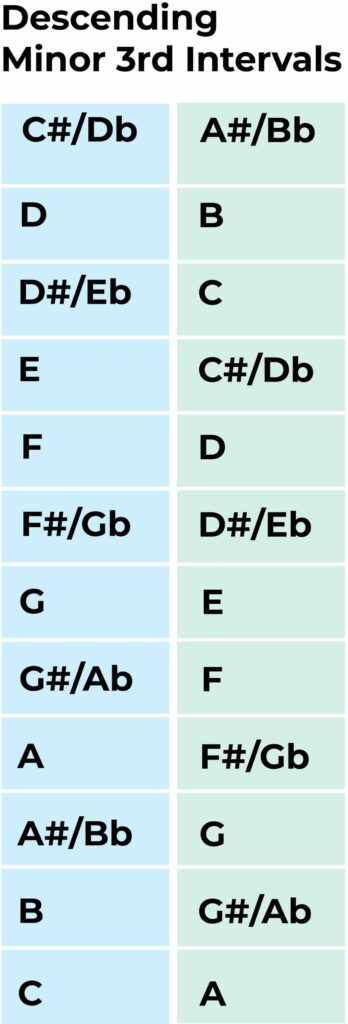
Minor 3rd Interval Qualities
We can describe the sound of intervals using a numbers of adjectives. An interval can sound ‘stable’ or ‘grounded’ like a perfect 5th, or it could sound ‘dissident’, ‘neutral’ or even ‘sinister’.
A minor 3rd interval, known for its dissonant and tense nature, elicits a sense of unease and melancholy. It carries a bittersweet quality, hovering between stability and instability. The close proximity of the two notes creates a dissonant clash. It has an unsettled quality, like a musical phrase suspended in anticipation of resolution. The dissonance of the minor 3rd interval adds a touch of dramatic tension, inviting listeners into a world of emotional depth and introspection.
How to Identify Minor 3rd Intervals by Ear
The best way to start identifying Minor 3rd intervals is by listening to reference songs like the ones above. This will give you a reference point to look back at when listening to new pieces.
Below you can see how the ‘re – fa’ in the solfeggi system can act as a great reference of a minor 3rd. This is actually a D natural to a F natural. As F# is the 3rd degree of the D major scale, F natural will be a minor 3rd interval.
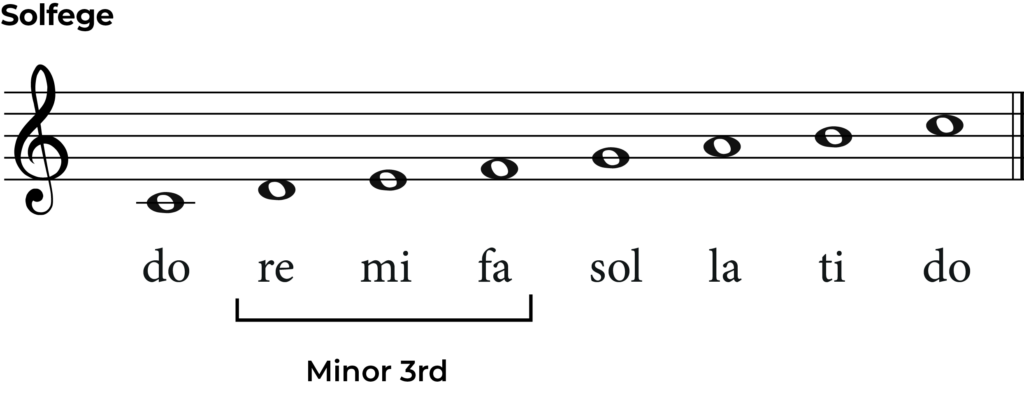
ToneGym- The Ultimate Ear Training App
ToneGym allows you to improve your ear with a range of games, interactive and competitions.
Or check out our complete review of ToneGym.

How to Play Minor 3rd Intervals on Your Instrument
If you are a pianist then playing a Minor 3rd couldn’t be easier. Moving up three keys (or three half-steps) will give you a Minor 3rd. Check out the examples below.
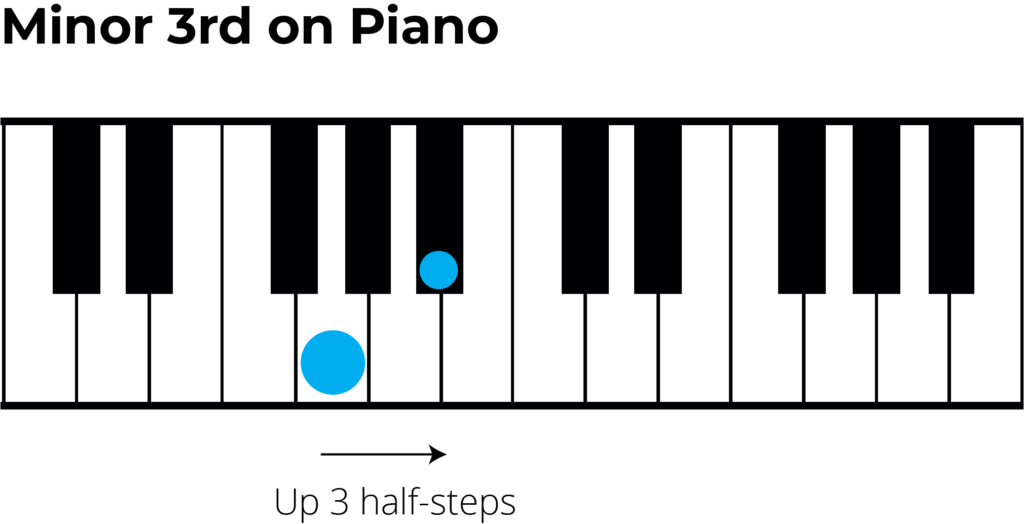
Minor 3rd intervals on guitar are also simply to play. Fret any note and then play the note 3 frets up. This will be a Minor 3rd interval. See the examples below.
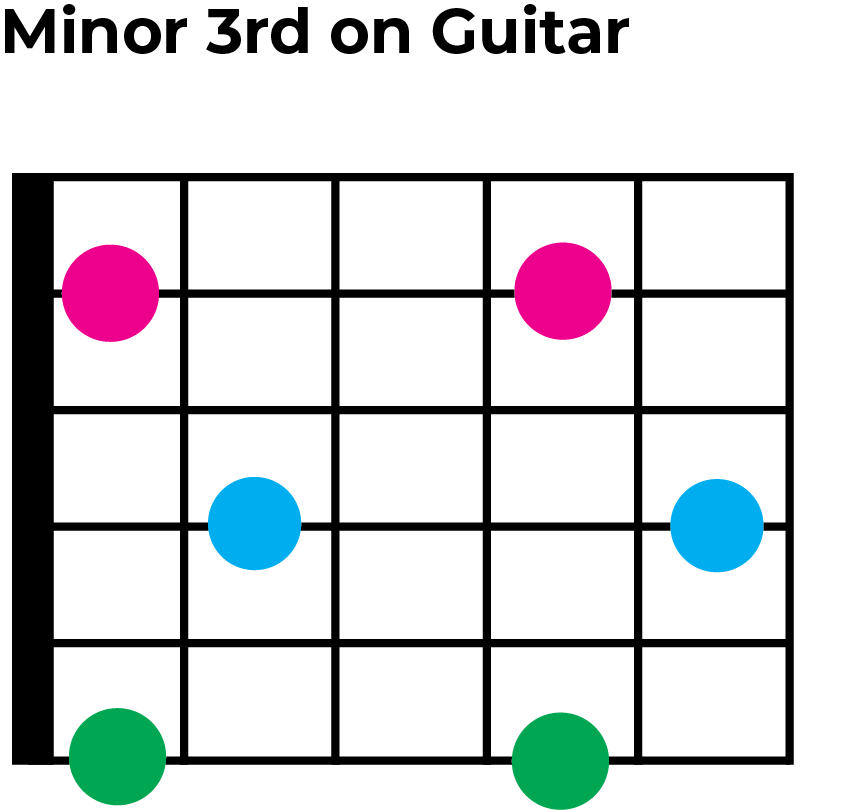
What’s next….?
- Learn about the Major 3rd intervals.
- Expand your interval knowledge with out complete guide to intervals.
